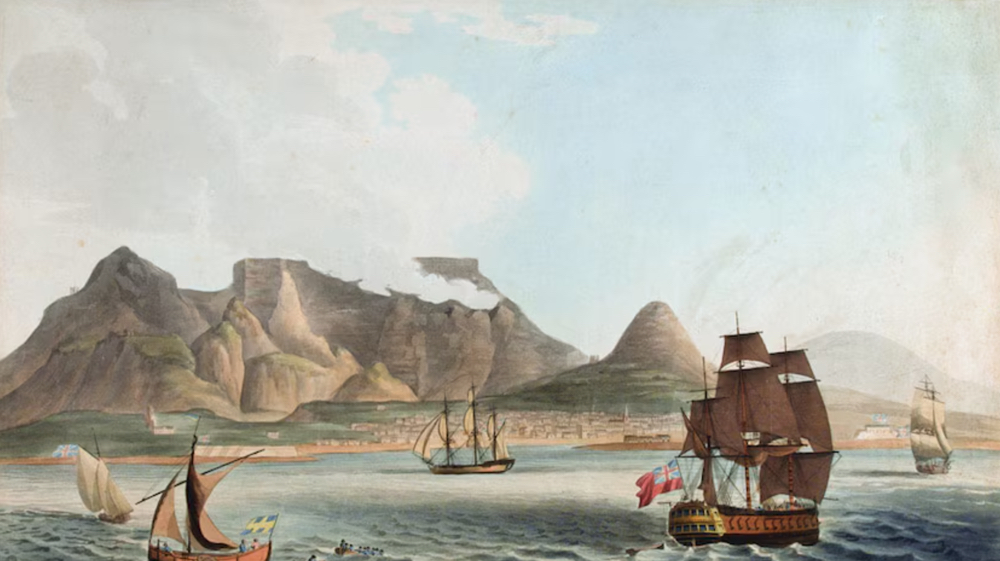My friend and the translator of the book The ‘Minorkeens’ of Gibraltar into English, Brian Porro, has just published a beautiful article in the Gibraltar Chronicle about a branch of his very extensive family, with roots and origins in the Rock and in many other parts of the Mediterranean and British worlds. The piece, entitled “Origins: a Soldier’s Unmarked Grave”, follows in the footsteps of an ancestor of his, James Keating, born in 1834 in Ireland when the Great Famine was beginning to wreak havoc among the population of the island. At the age of eighteen, he enlisted in a Scottish regiment that was involved in the Crimean War (1853-1856). Later, he was promoted to the rank of sergeant in Malta. In May 1857, his battalion arrived in Gibraltar.
On the Rock, Keating met a nineteen-year-old girl and a year later he married her: her name was Rosa Dominga Vila and she was the daughter of Menorcans who had emigrated, like many other islanders had done for a century, to the British outpost in the south of the Iberian Peninsula. Three months after the wedding, on 7 July 1858, the couple embarked with the rest of the battalion bound for Hong Kong, at the start of the “Opium Wars”. During sixteen weeks, the sailing vessel Lord Raglan, with a thousand people on board, navigated through the Cape Verde archipelago and the remote island of Tristán da Cunha until reaching the Cape of Good Hope and then crossing the Indian Ocean to Java. They arrived in Hong Kong on 25 October 1858 and Keating, who had fallen ill, had to be immediately admitted to the hospital, where he stayed for more than two months. When he was discharged from hospital, his delicate state of health convinced the military authorities that he had to be repatriated as soon as possible to Europe, together with his wife Rosa.
In 1859, on the way back, the couple had their first son, William; Rosa had given birth on the high seas when they were still on board the troop ship, on their way to Cape Town Colony. When they finally arrived at their destination, near Manchester, the young Rosa got off the boat – with a newborn in her arms – in a place as strange to her as Hong Kong would have been. In 1862, her husband’s regiment was transferred to another base in Colchester (Essex), where they had their second son, James Keating II. In the same camp, on 30 July 1864, James Keating senior contracted acute bronchitis and died. He was only twenty-nine years old and on 6 August 1864, one week after he was buried, his third son, Arthur, was born.

Returning Home
Six years after they met and travelled around the world aboard British warships, Rosa Vila found herself adrift in the middle of England with three children in her care. Thanks to an army payout of £34, 22 shillings and 10 pence, which was owed to her husband as back pay, she was able to return to Gibraltar, the city where she had been born on 27 May 1838, and meet up with her father, the gardener from Mahon Antoni Vila, but not with her mother, Rosa Fàbregas who was also from Mahon: she had died just as Rosa had disembarked in Hong Kong at the end of 1858. On the Rock, however, were also her eight brothers and sisters: Balthasar, Joana, Antonio, Margarita, Dominica, Sebastian, Catharina Antònia and Maria Magdalena.
Two years after returning home, Rosa Vila married John Neish, a Crimean veteran five years older than her. As the new husband was a Scottish Protestant, the wedding took place on 20 August 1866 in St Andrew’s Kirk, the Church of Scotland in Gibraltar. With Neish, Rosa had six more children until 1882: Rosa, Sebastian Alexander, John Philip, Louis Thomas, Mary Alicia and Lucy.
It is an interesting fact that the eldest son she had with her first husband in Cape Town, William Keating, married in 1884 the Gibraltarian Adela Mesilio, herself the daughter of a Maltese father and a Menorcan mother – Maria Susias Fàbregas. By coincidence, the maternal grandmothers of both the groom and the bride were from Mahón and had the same last name, despite not being directly related to each other.
As if life had not tested Rosa enough, she survived two of her children: Arturo (married to Otilia Valbuena) who had contracted tuberculosis very young and died on 16 October 1896, just a year after having his first and only son, also baptised with the name James Keating; and William, who died on 30 April 1914. James (married to Aurelia Crisp) died not long after his mother, on 28 October 1922.
While living in 3 Castle Ramp she also saw tuberculosis take her youngest daughter, Lucy, in 1907. And in 1910 she lost her second husband. A year later she moved from Castle Ramp to Lime Kiln Gully with her three youngest children, the home in the upper part of Gibraltar where she is recorded as having died on 17 December 1916. Thus ended almost eight decades of the epic life of a woman carved from Gibraltar stone and descended from a Menorcan family.

Comments are closed